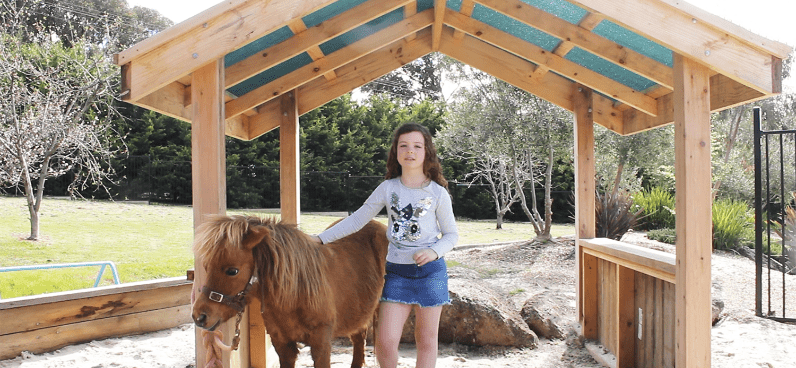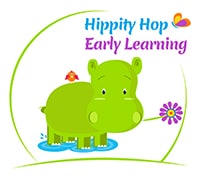Our Programmes
ABOUT

Other ways we encourage learning and development in this age group include.
Picture books, flash cards and hand puppets
Musical instruments
Spatial recognition- crawling through, around, over and under
Table top activities to encourage children to pull themselves up and begin walking around objects
Language is encouraged by repeating sounds such as babbling and repeating basic words to encourage their use in the older children. Turn taking is an important part of learning to converse, educators take the time to listen and then respond to babies and young children to teach these rules of conversation
Cause and affect are taught through equipment such as toys that can be pushed to make a sound, or balls that roll through equipment when placed in a hole etc.
Sensory exploration such as water, playdough, and finger painting are offered regularly.

Brain development
Our knowledge of early childhood development informs us of the importance of what is called crossing the midline. This is an area of development Hippity Hop early Learning prioritises.
The midline is an imaginary line down the middle of your body from your head down to between your feet. To cross that line and reach across your body from left to right and vice versa is considered crossing the midline. This is an extremely important skill for all children to develop as effectively it means they are using both the left and right side of the brain to coordinate movement. As both sides of the brain are responsible for different functions, they both need to be able to work together. Being able to cross the midline is required to assist in appropriate crawling, pre- reading, and writing skills, coordination, completing tasks that require 2 hands such as tying shoelaces, putting on socks etc. This skill starts to develop early on in babies and when poorly developed is suggested to affect future learning and coordination. Children in this age group are purposefully encouraged to develop this skill while at our Service during everyday play. Infants are encouraged to visually follow objects across their midline with their eyes when educators hold toys or instruments and move them from left to right, older babies and young children are encouraged to reach for toys and objects by holding them across the midline and songs and rhymes are used to cross the children’s midline through actions.

Other ways we encourage learning and development in this age group include.
Toilet training may begin, and support is offered to children and their families in achieving this huge milestone
Early numeracy- where children begin to recite the numbers
Providing a variety of art mediums for children to engage in and manipulate such as crayons, chalk, paint etc.
Other concepts are taught during play such as over, under and through with the use of obstacle courses.
Children begin colour recognition, and this is supported through everyday play
Early mathematical concepts such as balance when building basic towers
Dramatic play areas like a kitchen home corner.

Language develops a lot during this year and children often engage more in conversations and enjoy telling stories. They are extremely curious and often ask why? Their larger muscles are more developed, and they become more coordinated and more confident to engage in risker play such as jumping off play equipment or climbing higher or more challenging obstacles. Self-help and self-care skills are developing, and their independence and confidence begins to grow. Messy play and art experiences are greatly enjoyed as is uninterrupted indoor/ outdoor play. To support children in this age group our environments allow for lots of time for uninterrupted play both indoors and outdoors. Our educators may help children to engage or settle in play then step back to observe allowing the children to take over and direct the play within their group. This is important as they being to learn important skills such as communication and problem solving. Mealtimes are progressive and run over a longer period, this enables children who are engaged in play to finish, allowing them to come to the natural conclusion of their own play without fear of missing out. Smaller group experiences are set up to encourage children to interact with each other and not all equipment offers duplicates so that children learn to share and take turns. Emotions such as anger, frustration, sadness, fear, happiness, and excitement are discussed regularly with books, stories and pictures used to help children understand these very normal feelings. Work begins in teaching children what we can and can’t do when we feel a certain way. ‘I’ messages are introduced, for example’ I can see you feel angry because your friend took your toy and eventually moves to the children being able to use the ‘I’ messages themselves to describe their own feelings to others. Short group times such as story time, singing, poems and rhymes are engaged in, and children are provided the opportunity if desired to stand up in front of the group to share ideas, items from home or exciting news. This aids in building confidence and preparation for more engaged show are share once they reach the 4 year old kindergarten.


Other ways we encourage learning and development in this age group include.
More complex puzzles are offered
Play dough is a staple in this room as the hands are used to manipulate, pinch, roll and squash it
Self care discussions form a more complex part of the program with ‘why we wash our hands’, ‘what germs are and how they get on our hands’, dental care and healthy foods are discussed and experiences set up to teach and embed these practices.
What we need to be healthy and happy form part of the program and the children start to learn about the body structure.
Sustainability activities are more involved, and the children enjoy taking care of the vegetable gardens
Games and songs that have more complex actions are engaged in and crossing the midline is extended on.
Balance and core strength is extended on through obstacle courses. Rolling and jumping with 2 feet together as well as throwing and kicking becomes more purposeful and coordinated and children are provided lots of opportunity practice.
Our greater community becomes more a focus and children enjoy having other programs from external visitors such as animal encounters, puppets shows, traffic safety etc. They also start to have small group outings into our community through the use our enrichment program.



Other ways we encourage learning and development in this age group include.
Finer muscle development in their hands in order to support writing, with the use of scissors for cutting and pasting, small beads for threading, finer paint brushes, thinner pencils and textas, smaller puzzle pieces.
Books, songs and rhymes are used for early literacy.
Concepts such as small and big, in front and behind, light and heavy, sink and float.
Mathematics including numeracy such as counting, sequencing, and patterning. Balance in the elaborate block building and measurement such as length of objects or people, weight during cooking experiences etc
Games that allow sharing, waiting and turn taking
Imaginative play such as home corner, dress ups, dolls etc
Concepts such as small and big, in front and behind, light and heavy, sink and float.
Science concepts are taught during experiments and experiences and lots of questions to encourage hypothesising.
Name recognition by using placemats, bag hooks etc.
Coordination through obstacle courses, using wheelbarrows, kicking and catching balls, building with larger blocks. Songs and with actions that require jumping, hopping, balancing on one leg, crossing the midline.
Confidence and life skills through excursions that engage with the local community such as purchasing items from the supermarket.
Service and kindness by supporting the local community. This can be in the form of donating items to community organisations or visiting and sending pictures and gifts to our local nursing home.
Overall knowledge with new topics such as space, dinosaurs, life cycles of bugs or animals
Extensive projects and art experiences.
What Our Clients Say

We’ve been really happy with this Centre. The carer’s have done an amazing job helping our daughter settle in. She went from crying every time we dropped her off to now loving going to day care. We love the environment in the room and the level of care and environment shown by the staff
AARON PEACHEY
PAKENHAM

Since starting my children at Hippity Hop Childcare they have been so settled and have come in leaps and bounds. The staff are always so welcoming when we walk into the Centre and there is always so many activities for the children to participate in. I would highly recommend this Centre to families
AMI PRICE
PAKENHAM

Our Family has had multiple children attend this centre over the years and we just love it. From nursery to now kindergarten my youngest loves it. Ever week he is engaging in new topics, interests and learning independence. The staff are all so lovely and there is a low turnover rate which I find very important when choosing a centre. Highly recommended for anyone looking for childcare of kindergarten
MADELINE ABBOTT
BERWICK

We moved to this centre earlier this year after hearing such wonderful things about the centre. My children enrolled in both 3yr and 4yr old kindergarten program. We have been delighted with their progress so far. Not only have their educators helped them to feel welcome and valued, but they have exceeded our expectations with their knowledge and commitment to providing our children not only the best care but also a fantastic education
ALANA MAREE
BERWICK

My son loves attending Hippity Hop in Yarrambat. The staff are so friendly and caring and always try so hard to make him feel happy and welcome. Rachael goes above and beyond and always makes my son feel special. The environment feels so homely, and the learning experiences so far have been great!
DEM PAPS
YARRAMBAT

Would highly recommend this childcare, the teachers and staff are very engaging, supportive and caring. I have sent both of my children to this centre, and they have been absolutely amazing with them. I have noticed so much improvement in both my children. I have been so impressed with their programmes and learning techniques especially in the kindergarten room and 3-year-old room. I am completely confident that my child is ready for school with the thanks to all the staff and especially the kindergarten teacher.
KATELIN
ENDEAVOUR HILLS

My little one has been attending Hippity Hop in Yarrambat for coming up to 2 years now and I couldn't be happier. As a parent, I feel so fortunate to have found Hippity Hop, I adore the educators who are all so lovely and caring. The atmosphere is so homely, I love the feel and design of the rooms and outdoor play area. My son has excelled both socially and academically since he started there, the carers are all extremely communicative and I love dropping him off and watching all the other kids running over to greet him. It's so heart-warming! I love knowing that while he's away from me, he's being completely taken care of in such a happy and positive environment.
SARAH
YARRAMBAT

My Child has always felt like a family. From drop off to pick-ups, the kids are always showered with attention and love. The educators always put in extra effort to ensure the kids’ environment is one that is happy, safe, and educational. They are exceptional in ensuring parents are well informed on what’s happening with their kids and what’s going on in the centre. Overall, this centre is always highly recommended to our family and friends
